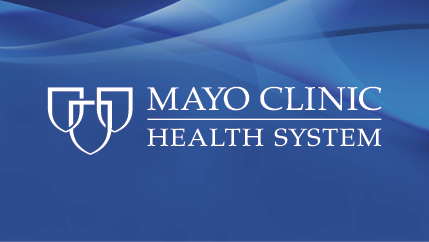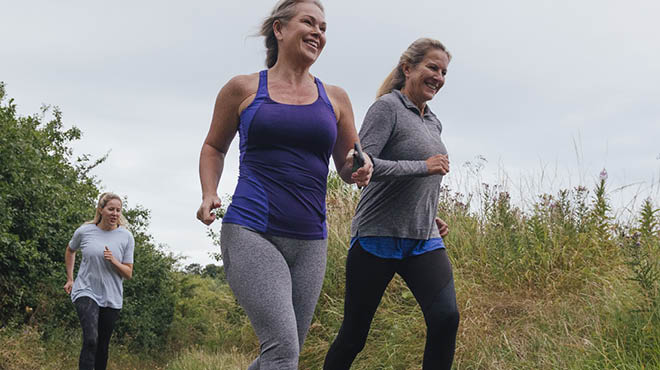Recent Posts
Debunking the top 10 workout myths

When setting out to achieve fitness goals, it's important to maximize workouts to ensure that you're doing everything possible to transform your body. However, among research, personal opinion and stereotypes, a lot of misinformation can make its way into workout routines.
To get the facts straight, here's a list of the top 10 workout myths:
Myth 1: Stick solely to cardio for weight loss.
While it's true you should include 20–30 minutes of cardio into your workout routine, focusing solely on cardio will not transform your body as quickly or as dramatically as you would think.
People perceive cardio as the ultimate solution because their heart rate is up. But in reality, you need to incorporate both cardio and strength training into your workout schedule. Strength training builds muscles and maximizes your cardio routine. The more muscle you have, the more calories your body is going to burn, especially during cardio.
Myth 2: Heavy weights will bulk me up.
You may have heard this in the weight room from time to time. Some people, particularly women, are concerned that adding strength training will build muscle bulk to the point they will look like a bodybuilder. This is not true.
For a female to bulk up, she would have to do a lot of strength training — and I mean a lot. Women do not have enough testosterone to bulk up the way men do. Competitive female bodybuilders follow strenuous diet and workout programs that likely feature use of various muscle-building supplements.
Myth 3: I worked out today, so I can eat unhealthy.
Sure you can if you want to undo everything you just spent an hour in the gym working on. Remind yourself that you can't work off a bad diet. Food is fuel, and proper nutrition guarantees results. It's pretty simple: If you want to lose weight, your calorie output needs to be higher than your calorie input.
Myth 4: Stretching helps prevent injuries
This one may be surprising. If you grew up playing sports, team stretching before a game was a regular routine. However, stretching before or after you exercise isn't proven to reduce your chances of getting an injury.
Stretching is beneficial because it prepares the muscles for movement and eases your workout recovery, but research does not indicate that it will reduce injury. That's entirely based on your form and movements during a workout. I recommend that people use functional, dynamic stretches like lunges and leg swings to help muscle movement during workouts.
Myth 5: If the number on the scale isn't going down, I'm not losing weight.
Many people focus on the number on the scale, but it is not the best representation of body changes. The number on the scale is a factor of many things such as how much water you've drank, what you ate and what time you're weighing in.
Often when a person loses a significant amount of weight, the number on the scale goes up because of building muscle from exercise.
If you want to accurately track your weight loss and muscle development, I recommend recording measurements of arms, waist and thighs. And if you're going to use the scale, weigh in at the same time every day.
Myth 6: Cardio machines demonstrate burned calories with 100% accuracy.
Some people depend on the treadmill to tell them an exact number of calories burned during a workout. Unfortunately, this metric isn't 100% accurate. Many factors determine how many calories your body will burn, including your sex, age and current weight. Some machines allow you to enter personalized data in one or two of these factors but rarely all three.
Myth 7: Sticking to ab workouts will give me a six-pack.
Abdominal workouts are great for developing core muscles because they benefit your body in many ways, such as improving your balance and stability. However, a person's overall body fat prevent abs from being seen. If you want six-pack abs, you have to dramatically decrease your body fat to 10%–12% for men or 11%–13% for women. While possible, this requires strict dedication to eating a healthy diet and exercise.
Myth 8: Supplements and protein shakes after workouts are necessary.
Supplements and protein shakes are not necessary. The benefits you reap from them can come from natural and direct food sources, such as chocolate milk, turkey and a scoop of peanut butter. It's important to remember that nutrition companies are out to make money. So they'll sell their product by convincing consumers it's the only product that provides what they need before, during or after a workout.
The truth is we don't need expensive shakes to get proper nutrients as we can get those directly from less expensive food sources. If you consume protein-rich foods after a workout, do so within 30 minutes. That's when your muscles absorb that energy, as they're still burning and working.
Myth 9: If I'm not working up a sweat, I'm not working hard enough.
Sweating is an inaccurate way to measure how hard you've worked out. Sweating shouldn't be a gauge of how hard you're working during a workout. Many factors go into the amount a person sweats, such as the temperature, humidity and hydration levels. Your body just could be efficient at cooling itself, as well.
Myth 10: No pain, no gain.
While feeling uncomfortable during a workout is normal, feeling pain is not. Many athletes live by the "no pain, no gain" motto, but pain is the way your body tells you that something is wrong. If you start to feel pain during a workout, stop immediately. If you continue to push through it, you could end up with a serious injury.
By Mayo Clinic Health System staff






